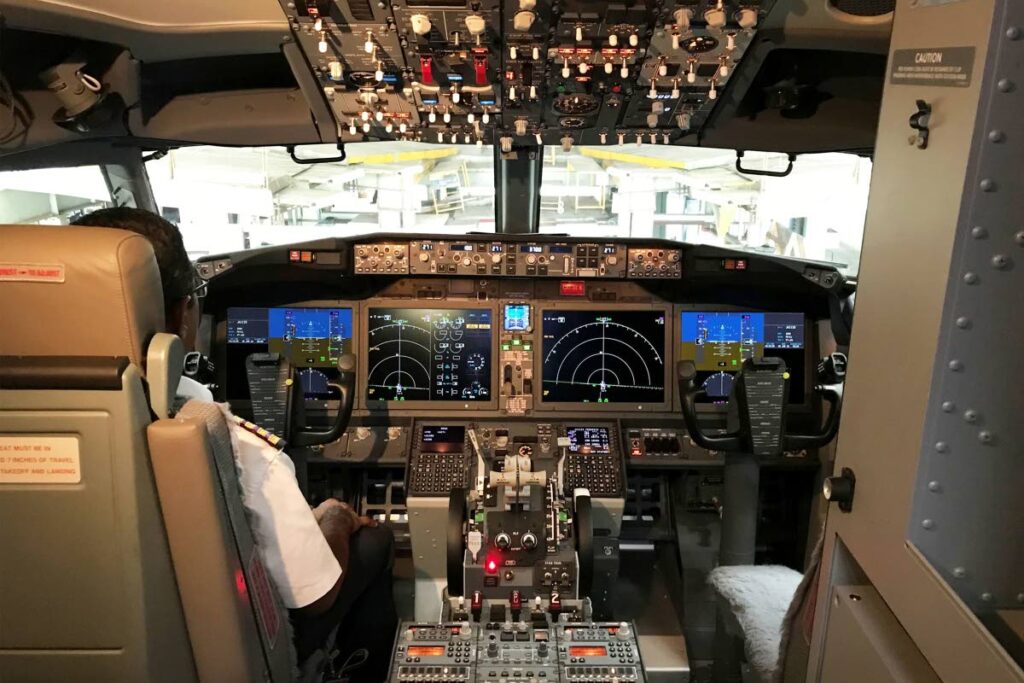Preventing mid-air collisions


Part II
In the present “total system" era, significant improvements in aircraft design, operating procedures and air navigation systems have made air transport one of the safest modes of transportation. As stated previously, air transport safety improved during the human, technical and organisational eras of evolution in accident prevention.
Modern day commercial aircraft are highly automated and require less human input by pilots. The onboard flight management system (FMS) is fundamental to an aircraft's avionics and consists of a specialised computer which integrates a wide range of sensors. FMS accepts aircraft position information from the GPS and ground-based radio navigation, temperature from sensors at various parts of the airframe and engines, weight of fuel from in-tank sensors and airspeed from pitot static probes.
With integrated inputs, the FMS can guide an aircraft along the flight plan. Pilots control the FMS through a control display unit consisting of a small touchscreen, similar to the typical tablet computer.
Pilots actively monitor flight progress on these electronic flight instrument system navigation display screens.
As it is a single-point management tool, other flight data. such as altitude, heading, speed, engine parameters, wind speed and direction, weather radar data and other aircraft within a 30-mile radius. is presented at the touch of the screen.
This level of automation has reduced the workload of flight crew to the point that most commercial aircraft no longer require flight engineers or navigators. The cockpit is now largely a two-person operation.
On the ground, communication navigation and surveillance systems, coupled with air traffic management (ATM) systems, provide the safe separation of aircraft from gate to gate. Advances in air-traffic control tools such as automatic dependent surveillance-broadcast (ADS-B) are replacing conventional radar as the primary means of aircraft surveillance.
ADS-B broadcasts the main attributes of an aircraft’s flight at a rapid rate (usually every second) to air-traffic control centres where the information is displayed in real time for controllers. ATM software has safety features that "red-flag" potential breaches of safe separation between aircraft in flight.
However, there are environmental safety hazards, such as wind shear and terrain, which cannot be eliminated and therefore must be avoided.
Strong outflows of wind from thunderstorms create rapid changes in wind speed and direction close to ground level. Wind shear in the form of microbursts is a severe hazard to aircraft during take-off, approach and landing. Such outflows can cause headwinds or tailwinds that present misleading airspeeds. Engine power would be decreased or increased to maintain speed if the crew is unaware of the wind shear. This can lead to an accident if the aircraft is too low to effect recovery before contact with the ground.
Between 1964 and 1985, wind shear directly caused or contributed to 26 major civil-transport aircraft accidents in the US that resulted in 620 deaths and 200 injuries. Windshear detections systems are now installed on all commercial aircraft.
An aircraft weather radar predicts areas of windshear ahead of the flight. When this is located, appropriate advisories or warnings are generated to the flight crew for evasive action. Weather radar systems are mandatory for commercial aircraft .
In the late 1960s, a series of accidents deemed “controlled flight into terrain” (CFIT) took the lives of hundreds of people. A CFIT accident is one in which a properly functioning aeroplane under the control of a fully qualified and certified crew is flown into terrain, water or obstacles with no apparent awareness on the part of the crew.
Subsequently, a number of studies examined the occurrence of CFIT accidents. These studies determined that many such accidents could have been avoided if a warning device called a ground proximity warning system (GPWS) had been used.
The GPWS uses a radio altimeter to measure the distance from the ground. This data is compared with the GPS position of the aircraft and, using a database of the terrain morphology, alerts the pilots of any risk of collision with suggested evasive action. The installation of GPWS is mandatory on all commercial aircraft.
In order to prevent mid-air collisions, a traffic-collision avoidance system (TCAS) is mandatory. It monitors the airspace around an aircraft for other aircraft with an active transponder, independent of air traffic control. It warns pilots of the presence of other transponder-equipped aircraft which may present a threat of a collision.
TCAS provides advisories on traffic within a 30-mile radius. When the system detects the imminent threat of a collision, it provides resolution advisories to both conflicting aircraft with aural commands for vertical resolution. Each aircraft receives a different command, one to climb and the other to descend.
In modern aircraft, the interface between the GPWS and TCAS for aircraft 1,000-feet or less above ground level is a horizontal resolution. This reduces the hazard of CFIT and false alerts close to airports.

Comments
"Preventing mid-air collisions"